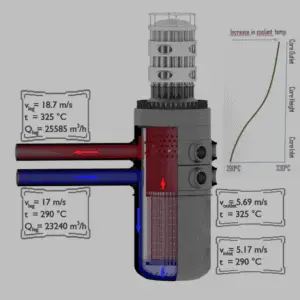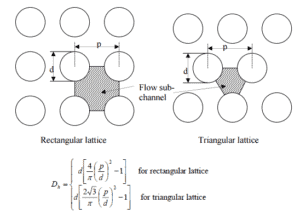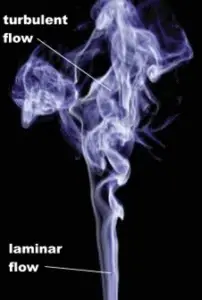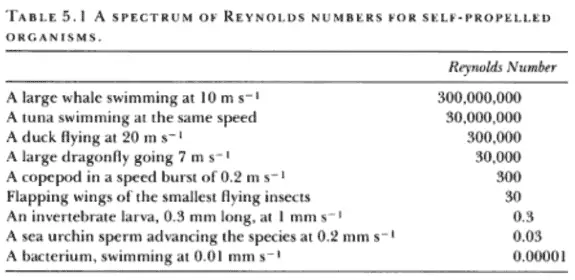Example: Turbulent flow in a primary piping

The primary circuit of typical PWRs is divided into 4 independent loops (piping diameter ~ 700mm), each loop comprises a steam generator and one main coolant pump. the primary piping flow velocity is constant and equal to 17 m/s. The Reynolds number inside the primary piping is equal to:
ReD = 17 [m/s] x 0.7 [m] / 0.12×10-6 [m2/s] = 99 000 000.
This fully satisfies the turbulent conditions.
Example: Turbulent flow in a reactor core

Inside the reactor pressure vessel of PWR, the coolant first flows down outside the reactor core (through the downcomer). From the bottom of the pressure vessel, the flow is reversed up through the core, where the coolant temperature increases as it passes through the fuel rods and the assemblies formed by them. The Reynolds number inside the fuel channel is equal to:
ReDH = 5 [m/s] x 0.02 [m] / 0.12×10-6 [m2/s] = 833 000.
This also fully satisfies the turbulent conditions.
See also: Hydraulic Diameter
Example: Smoke rising from a cigarette
 For the first few centimeters, the flow is certainly laminar. However, at some point from the leading edge the flow will naturally transition to turbulent flow as its Reynolds number increases. The Reynolds number increases as its flow velocity and characteristic length are both increasing.
For the first few centimeters, the flow is certainly laminar. However, at some point from the leading edge the flow will naturally transition to turbulent flow as its Reynolds number increases. The Reynolds number increases as its flow velocity and characteristic length are both increasing.
We hope, this article, Example of Turbulent Flow, helps you. If so, give us a like in the sidebar. Main purpose of this website is to help the public to learn some interesting and important information about thermal engineering.
